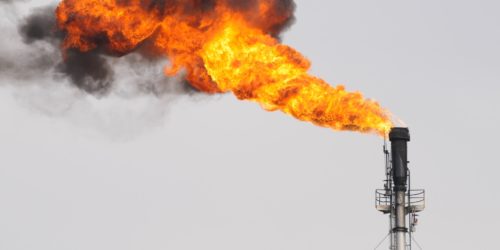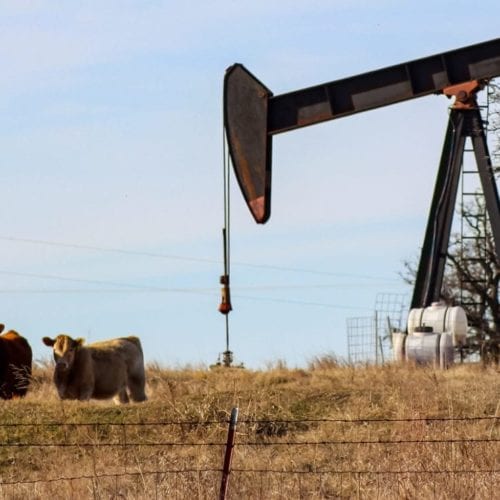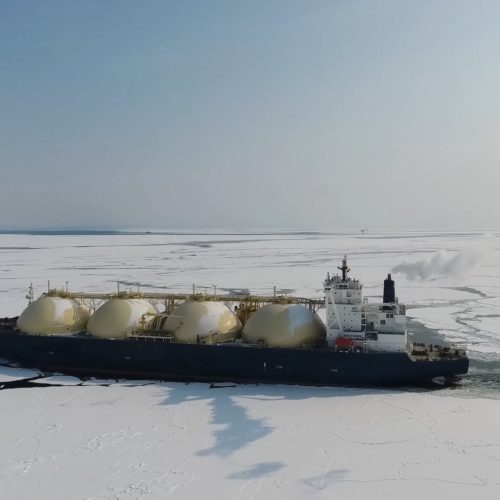A close-up of a gas flare from the burn-off of a natural gas plant.

Colorado Agrees: Routine Flaring and Venting Should Be Anything but Routine
Colorado recently became the second US state to overhaul and tighten gas flaring and venting rules, joining Alaska in prohibiting routine flaring and venting. This means that companies can only legally flare and vent gas during upset conditions and not for longer than 24 hours. Other states are expected to follow suit and the European Commission is similarly considering regulation to end routine flaring and venting as part of its recently announced methane strategy.
Routine flaring is the practice of regularly burning excess gas—mostly methane—in oil and gas production and processing, while routine venting is intentionally or inadvertently releasing excess gas without burning it. These practices occur when gas is not economically attractive enough to be sold along with liquids, facilities lack the infrastructure to gather gas, or equipment is faulty.
Routine flaring is one of the most common oil and gas operational practices and has been for nearly 200 years. It is also a major source of greenhouse gas (GHG) emissions like carbon dioxide (CO2) and methane (CH4), as well as black carbon, a form of particulate matter that is also a climate pollutant. The International Energy Agency estimates that flaring from global oil and gas operations worldwide in 2018 accounted for more CO2 emissions than the entirety of Spain.
From Voluntary to Mandatory Restrictions
To date, flaring reduction and oversight has been largely voluntary for oil and gas companies. Several efforts, most notably the World Bank’s Zero Routine Flaring by 2030 initiative, set ambitious targets and drew significant company and national participation. Several oil companies have voluntarily committed to eliminate routine flaring in their operations by 2030 under this initiative. Now, regulators are starting to mandate flaring restrictions to speed up GHG emission reductions and improve air quality.
Flare restrictions will require changes in oil and gas company practices. These changes need to be informed by real-time, trusted data that companies, regulators, and investors can use to improve operations, enforce regulations, and verify climate action. Rocky Mountain Institute’s (RMI) Climate Action Engine (CAE) can assist these stakeholders in identifying and tracking emissions to verify compliance with regulatory limits or company goals. Satellites, aircraft, and sensors that measure flared gas volumes and methane emissions can help to enforce today’s rules. Tomorrow’s higher-resolution remote sensing instruments will further enhance the CAE’s capacity to inform emissions reduction actions.
Positioning Colorado’s Oil and Gas Industry for a Clean Energy Transition
The Centennial State’s newest strategy to tackle climate change via ending routine flaring is an indication that decarbonization efforts could significantly reshape future oil and gas operations.
In 2019, the United States was the world’s largest producer of crude oil and Colorado was the fifth-largest producing state, accounting for 4% of total US production. At the same time, Colorado also codified its GHG reduction goals, calling for at least a 26 percent reduction by 2025, 50 percent by 2030, and 90 percent by 2050 from 2005 levels. To facilitate these goals, the Colorado General Assembly passed a companion bill that requires Colorado’s Air Quality Control Commission (AQCC) to collect and routinely report GHG data from carbon-intensive entities in the state.
Previously, Colorado set new thresholds for leaks, required more frequent inspections, and committed operators to more rapid Leak Detection and Repair (LDAR), making the state LDAR requirements some of the most comprehensive nationwide. Colorado also adopted new rules for pre-production emissions monitoring, which AQCC claims is “the first state regulatory system of its kind in the country.”
Colorado is building on this momentum by eliminating routine flaring and venting. This rule will force operators to explore cost-effective solutions, such as investing in takeaway infrastructure to sell this gas or re-inject it into oil or gas reservoirs. Although non-routine “emergency” flaring will continue, these practices are less concerning as long as they involve small flared gas volumes, are intermittent, occur in short durations, and flares themselves are highly efficient and well-maintained.
Heightened Focus on Methane Emissions
While flaring and venting are both environmentally damaging, flaring is a more acceptable industry practice because the combustion of unwanted gas releases more carbon dioxide than methane. However, inefficient and unlit flares also emit high levels of methane, a greenhouse gas that is over 80 times more powerful than CO2 over a 20-year timeframe.
Ending routine flaring and venting is a necessary but insufficient step to align the oil and gas sector with 1.5°C climate targets. To mitigate their operational emissions, companies must also significantly cut methane emissions beyond routine venting and flaring from all sources, including tanks, controllers, and shut-in wells. It is critical to enable, incentivize, and regulate methane emissions reductions in oil and gas operations in a more holistic way.
RMI and its partner organization, Systemiq, have developed the MiQ Standard—a methane emissions standard for natural gas— to facilitate just that. The MiQ Standard defines differentiated gas in terms of its upstream methane emissions performance. This framework grades, and thereby differentiates, natural gas production according to its facility-level methane intensity, company practices, and monitoring technology deployment. It can be employed in voluntary markets and in regulation (either in terms of production criteria or procurement criteria) to credibly evaluate and demonstrate methane emissions abatement associated with gas production and use.
To Curb Climate Change, We Need All Hands on Deck
Climate change is a global crisis that requires all actors across sectors, states, and countries to commit to implementing and enforcing measures that will limit global temperature rise to 1.5 oC. This includes, but certainly is not limited to, eliminating routine flaring and venting. To start, other major US oil-producing states like Texas, North Dakota, Oklahoma, and New Mexico must follow in Colorado’s footsteps, as must regulators in other countries.
Using verified and analyzed data from satellites, remote sensing, process models, and operator-reported data, RMI can provide climate intelligence to enable companies, regulators, and investors to take actions that further our stated climate goals and get the world on a cleaner and safer energy path.
To learn more about the Climate Action Engine, visit www.rmi.org/cae
For more on the MiQ differentiated gas standard, visit www.miq.org

